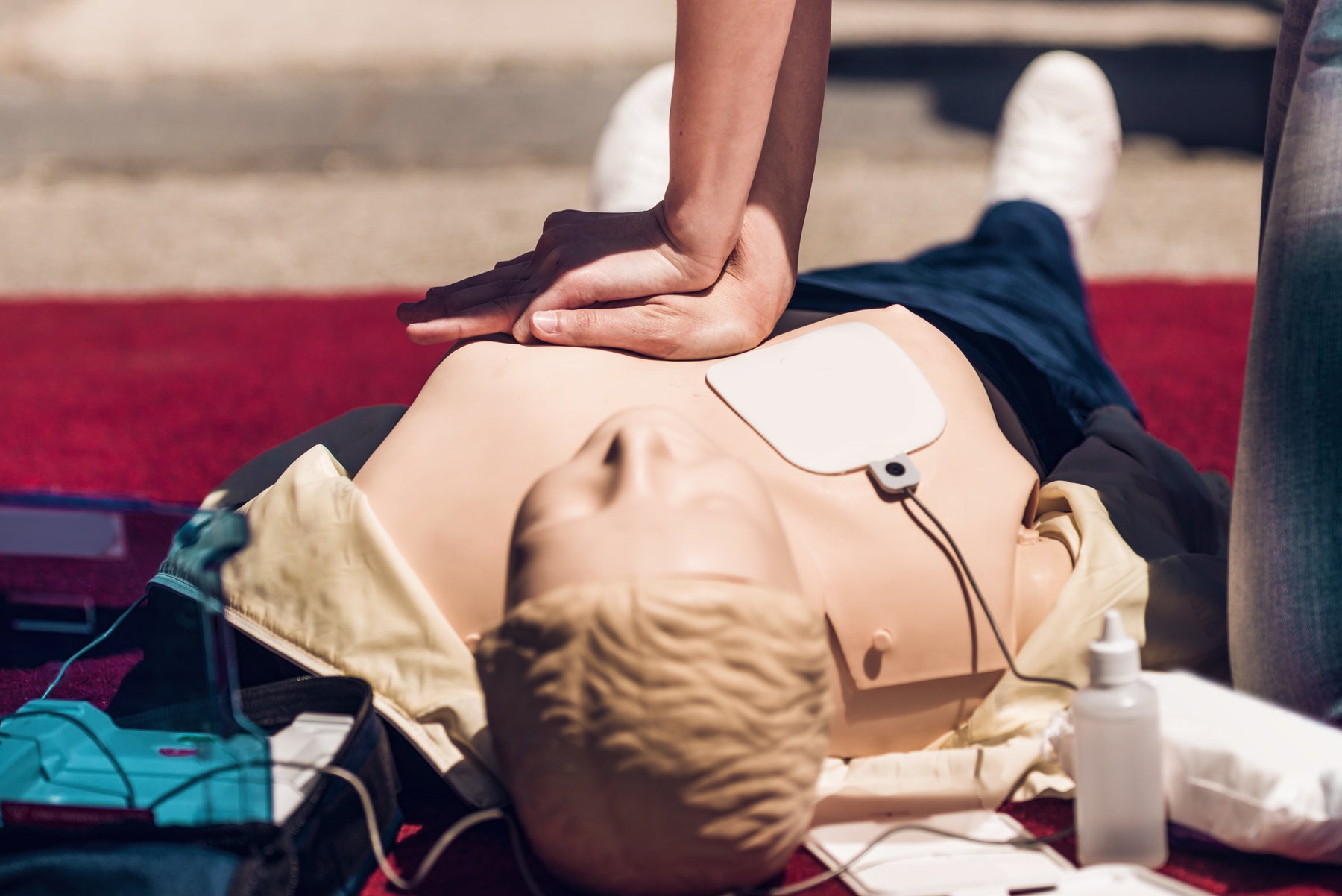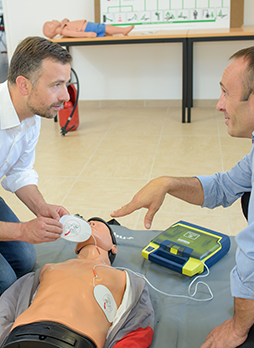Available via chat

AED - Using Defibrillators to Save Lives - What You Need to Know
Over 30,000 people across the UK suffer from a cardiac arrest each year and the fact is that only around 5-10% of this number survive to tell the tale. The fact is that if CPR was implemented earlier on a more frequent basis, along with the use of AED machines, that survival rate could be treble what it is now.
Time really does count when using defibrillator pads too, as with every minute that passes without defibrillation and CPR being administered, the chances of survival drops by 10%. With average ambulance times of between 6 and 8 minutes across the UK, it’s often a real matter of life and death.
So, What Exactly Is Defibrillation?
When someone experiences a sudden cardiac arrest, there is a disruption to the heart’s rhythm, which becomes erratic and irregular. This means that the patient’s heart is unable to beat properly, which affects the breathing leading to the body not getting the oxygen it needs.
What defibrillators do is provide a jolt of electrical energy directly to the heart to help restore its normal rhythm. The good news is that public defibrillator equipment is simple to use and it doesn’t require training, meaning that anyone in vicinity of a medical emergency like this can help.
Is a Defibrillator Safe to Use?
Anyone who’s ever seen defibrillators used on TV will know that they can be dangerous, due to the high voltage involved, however, with public access defibrillators, you really don’t need to worry. They’re sealed units and they’re really, really safe. What’s more, after switching one on, it will actually talk you through what you need to do with clear, easy-to-understand instructions.
You don’t need worry about harming your patient either, as it will only ‘shock’ someone suffering from cardiac arrest as and when it’s required. There’s absolutely no threat to your safety, so if you’re ever required to use one, don’t be afraid to jump in and help.
Reacting to an Emergency
In any kind of medical emergency, often the best course of action is to call 999 and get an ambulance heading your way. When talking on the phone, the emergency call handler will help guide you through CPR (if necessary) and tell you where to find your closest public access AED.
There are around 10,000 AED machines across the UK and that number is growing all the time. They’re often located in large public areas like shopping centres and it should clearly show something like ‘AED’ or ‘Defibrillator’ on the outside. Failing that, you should look for a ‘green heart’ image’
Maintaining Your Defibrillator
If your place of work has an AED location and you are responsible for keeping it maintained, it’s important that you know what to look out for. The worst thing you want to do is have to use it and find out that it has no battery power or it’s broken in some other way.
Things you need to watch out include:
● Ensuring the battery is installed correctly
● Checking that there is no audio/visual alarm showing an issue
● Making sure there are no cracks on the outside of the unit
● Confirming that the defibrillator pads in the AED haven’t expired
Of course, there is more to maintaining it than just these points, however, when you have a spare moment at work, you can check the manufacturer’s advice on how to best maintain your particular make and model of defibrillator and take the appropriate action.
Familiarize Yourself With AEDs & You Could Save a Life
As you can see, defibrillators are true live-saving devices, however, they need calm, informed people to operate them that understand that they’re not dangerous or difficult to use. Take this on board now and you’re that much more likely to move quickly when you see a cardiac arrest happening and the precious seconds you save could make all the difference to the person you’re trying to help.


